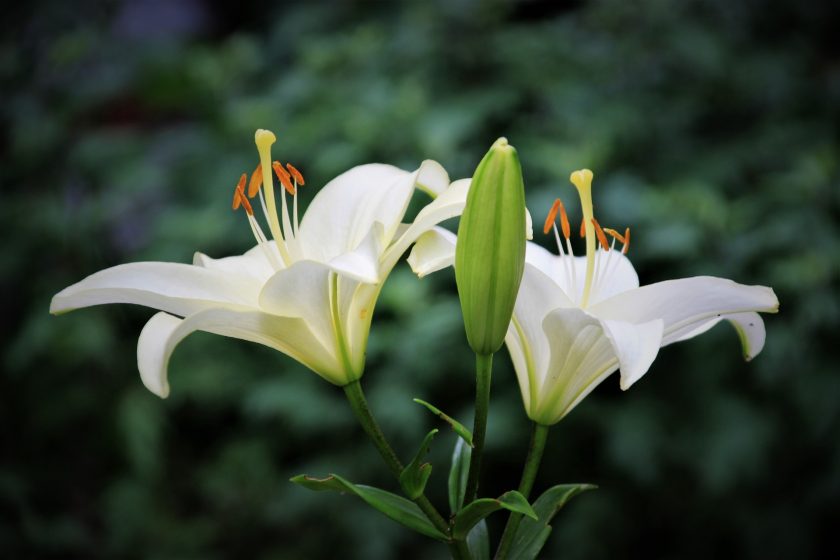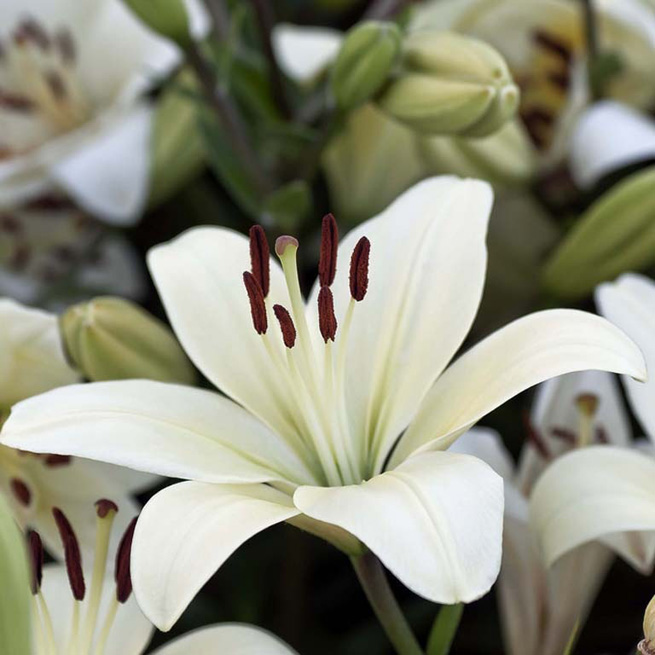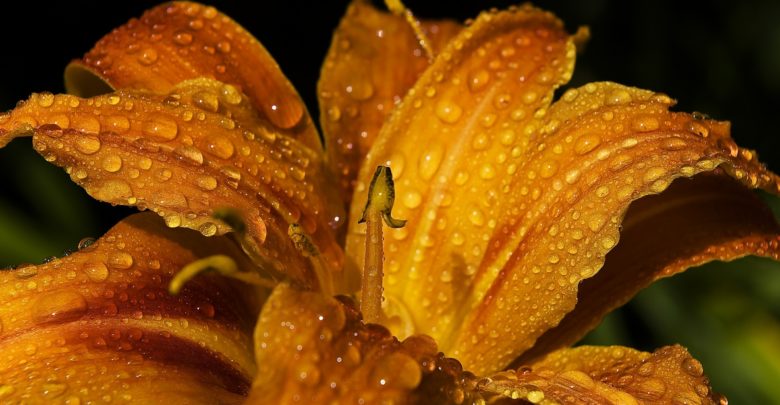Content:
Lilies belong to the category of perennial plants, but it is clearly not possible to grow them for several years in a row in the same place. The fact is that over time, the flowerbed will be filled with dense thickets, the flowers will gradually become smaller and soon the lily will stop blooming altogether.
Today, the lily is in great demand. The plant is grown by both professionals and novice florists. Breeders from different countries are actively working on a variety of crop varieties. Lily is popular with both amateur gardeners and entrepreneurs for whom growing this flower is a business. The success of cultivation depends on how well a person knows the structure, developmental features and the timing of lily transplantation.
About transplanting lilies in the open field
For the normal development of a flower, it needs to be transplanted every 3-4 years. The frequency is determined depending on which variety grows on the site.
- American hybrids are allowed to be transplanted only once every 10 years.
- For Asian and Tubular hybrids, strong bulb growth is characteristic, therefore it is recommended to move them to a new place every year (the maximum allowable break for Asian hybrids is 3 years).
Some novice gardeners do not understand the feasibility of this event. They emphasize that the "relocation" of a flower to another area is stressful for it, this can subsequently lead to a decrease in the protective functions of the plant. In addition, there is a possibility that the lily will not take root at all in new conditions for it. Of course, all these points are very important, but a transplant is still necessary.
First, plants need nutrients for their growth, which they consume from the soil using the root system. Each type of flower has its own set of useful elements.
On the one hand, this problem can be solved by feeding. On the other hand, not all summer residents and flower growers use this technique, since it requires solving many difficult problems. For example, the exact setting of the optimal dosage of fertilizers (which will not be so easy for an inexperienced gardener to do). Thus, as a result of the disturbance of the ecological balance of the soil, the flowering of lilies gradually declines, their beauty fades and fades.
Secondly, the culture does not tolerate abundant watering and oversaturation of the soil with moisture. At the same time, it is quite difficult to bring the watering process to the ideal. Many gardeners rarely visit their plots, so they begin to abuse watering, trying to catch up with lost time, and also make a reserve for the future.
In addition, in gardening partnerships, water supply disruptions often occur, which disrupts the regularity of watering the site. Added to all this are precipitation, groundwater, lack or improper installation of drainage, melting snow. In this regard, there is a violation of the integrity of the root color system. Thus, the second task that the lily transplant performs is monitoring the condition of the bulbs.
Thirdly, if the roots of the flower are rotten, there is a possibility that the disease will spread to other lily bushes (given that the planting and growth of these plants is quite dense). Periodic inspection of the bulbs and replanting of lilies will help avoid unnecessary problems and allow the flower to develop normally.
For many varieties of lilies, the formation of "children" is characteristic. This process is quite natural, but if they are not removed, the bulbs will begin to take most of the nutrients from the soil, leaving nothing of the "parent" lily. As a result, the intensity of crop growth will decrease and flowering will worsen. As a result, the bush will turn into a set of green stems, only slightly indicated by the weak flowering of small buds.
Fourth, few varieties of lilies are capable of withstanding the harsh Russian winters outdoors. The transplant in this case is not a whim, but a necessity. Before the onset of cold weather, the flowers are dug up for storage in a suitable environment for them, and in the spring the culture is re-rooted on the site.
Fifth, a too developed root system begins to pull the bulb deep into the soil. The intensity of immersion can reach from 5 to 15 cm every 2-3 years (exact figures also depend on the density of the earth). As a result, every year it becomes more difficult for sprouts to break through to the surface, many of them remain under the soil layer.
When can lilies be transplanted from one place to another
Earlier it became clear what the significance of transplanting lilies is, when it is better to carry it out is another question. Some growers are of the opinion that it is better to transplant a crop in the fall, others prefer to do it in the spring, and still others in the summer. In this matter, several factors need to be taken into account, including the climatic conditions of the region and the variety of lilies that are planted on the site.
Most summer residents prefer to transplant in the fall, when the tubers are already dormant. After the end of flowering, about a month should pass - during this time the roots will be able to get strong enough to normally endure wintering.
Some varieties of lilies, such as Tubular and Oriental hybrids, bloom quite late. In a month, the first frosts will come and the plant will not have time to take root in a new place. In addition, rooting flowers in cold soil will lead to hypothermia of the root system and a delay in its development. If a stable cold snap comes early, it is recommended to postpone the transplantation procedure to the spring season.
Signs that a plant is ready for transplant are:
- the end of the flowering period;
- accumulation in the stems of a sufficient amount of nutrients;
- the appearance of several bulbs in place of one bulb.
Is it possible to transplant lilies during flowering
The flowering period falls in the second part of the summer season. This time is the starting point from which the moment of the transplant is counted. Experienced gardeners do not recommend "relocating" the lily during its flowering period, since this procedure will disrupt metabolic processes in plant tissues, worsen flowering, and also lower the immunity of the culture.
When is it better to transplant lilies: in summer, autumn or spring
Experts recommend replanting crops in the fall. More accurate, optimal terms are set in accordance with the climatic features of the area. For example, in the middle lane, the best time for transplanting lilies is the end of August - the first decade of September; for the southern regions, the appropriate time for this event comes in September-October.
One way or another, the culture is transplanted a month after the flowering period ends.Only in this case will lilies have time to accumulate enough nutrients for successful rooting in a new place.
Quite often, lilies are transplanted in the first months of summer. At the same time, it is recommended to propagate flowers by division. The combination of these processes will reduce the risk of diseases in the plant.
Transplanting lilies in summer, autumn, spring
Despite the fact that the preferred time for the event is autumn, summer and spring transplantation of lilies is not excluded. Next, it will be discussed in detail when and how best to transplant lilies to another place.
In the spring
To do this, it is necessary to dig up the bulbs in the fall, ensuring their reliable storage in the winter season.
- Flowers are removed from the soil in October: by this time they have time to accumulate nutrients.
- The roots are freed from soil particles, wrapped in a film, having made holes in it in advance for airing.
- A layer of sawdust is added to the lilies.
- Store the flower package in the refrigerator or other dry and cool place.
In the spring, when the weather is warm and the soil warms up, the bulbs are planted in open ground. Sand and decayed foliage are also added to the soil.
Summer
There is nothing difficult in figuring out how to transplant lilies in the summer to another place. Some varieties of lilies, such as Candidum, are transplanted exclusively in summer. This is due to the unusual cycle of plant development - the dormant state of the flower falls in July-August, and during this short period of time it is necessary to have time to "relocate" the plant.
In the first days of September, fresh leaves will begin to form on the lily. This variety does not require frequent transplanting: the optimal frequency is once every 5 years.
As for Asiatic lilies, the situation with them is very unusual: the timing of transplanting these flowers is not limited. Plants can be moved even during their flowering period. An important condition is to prevent damage to the root system, and at the end of the procedure, water the culture with plenty of water. At the same time, the buds are cut off (this is done so that the bulb will successfully take root in a new place).
In autumn
Late varieties of lilies are usually transplanted in September-October. After the last bud has withered, it will take a little more time for the bulbs to grow stronger. Therefore, you should not rush to transplant - let the flowers lie on the ground for a few more days.
Autumn lilies are transplanted before the onset of the first frost. It is important that the ground is still warm and soft. Otherwise, the plant will not have time to take root and, most likely, will not survive the cold winter.
It should be noted that late transplantation affects the period of spring flowering - it is postponed to a later date. In this regard, in the presence of adverse weather conditions, it is recommended to postpone this event to spring.
Lily transplant instructions
So, the optimal time has been chosen, now you need to correctly carry out the procedure.
The transplant algorithm is as follows:
- Cut off the stems of the flowers.
- Carefully remove the bulb from the soil.
- To clear the tuber from the ground, remove the dead scales.
- If the bulb does not disintegrate on its own, it is divided into parts with a knife.
- Planting material is kept for 30 minutes in karbofos or potassium permanganate.
- At the proposed planting site, holes are made of the required depth (while the roots are additionally allotted at least 10 cm).
- Sand is added to the hole, then an onion is placed in it, covering the roots with sand.
- The hole is covered with earth and covered with mulch.
Lilies, planted in spring, are significantly ahead in the development of culture, which took root in the fall and were stored in the frozen ground throughout the winter. That is why one should more thoroughly approach the choice of the timing of the transplant, taking into account the peculiarities of the climate and varieties of lilies that grow in the garden.
Further care
If the climate in the region is cold enough, then after replanting in September-October, when the ground begins to freeze, flowers need to be provided with good shelter for the winter.Spruce branches or dry foliage can be used as a covering material. The thickness of the covering layer should be about 10-15 cm. To prevent the wind from tearing the shelter, boards should be placed on top of it.
After the snow melts, the shelter should be removed. Next, the soil must be loosened and fertilizers added to it. Thanks to the first feeding, the crop growth will kick in. The recommended type of fertilizer is nitrogen-containing. To prevent the effects of spring frosts, lily sprouts must be covered with a film.
So that the flowers do not lose their beauty and do not die, they need to be transplanted regularly. As it turned out, transplanting lilies is not at all difficult. The most important thing in this matter is to adhere to the rules and recommendations regarding when to transplant lilies, when to dig up lilies for transplanting, as well as the order and frequency of this event.



















